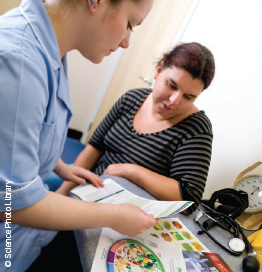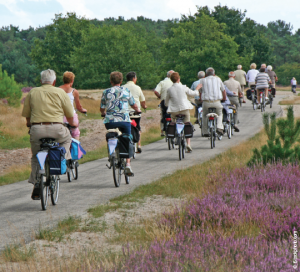North West London To try and identify local barriers and share good practice, we have been regularly reviewing our cardiac rehabilitation (CR) services in North West London. Through this process we hope to increase the average uptake in a step-wise fashion from 50–60% to the national target of 85%.1 Lack of appropriately funded services and … Continue reading START: insights from the regions
North West London
 To try and identify local barriers and share good practice, we have been regularly reviewing our cardiac rehabilitation (CR) services in North West London. Through this process we hope to increase the average uptake in a step-wise fashion from 50–60% to the national target of 85%.1 Lack of appropriately funded services and low staffing levels are real problems across the sector, unfortunately.
To try and identify local barriers and share good practice, we have been regularly reviewing our cardiac rehabilitation (CR) services in North West London. Through this process we hope to increase the average uptake in a step-wise fashion from 50–60% to the national target of 85%.1 Lack of appropriately funded services and low staffing levels are real problems across the sector, unfortunately.
Nevertheless, some innovative approaches to CR are taking place. The uptake of CR services after primary percutaneous coronary intervention (PPCI) for myocardial infarction has increased from 26% to 84% at Imperial College Healthcare NHS Trust.2 This has been achieved by funding a designated phase 1 cardiac specialist nurse to ensure all PPCI patients are seen in hospital and offered CR at a local centre, with introduction of a patient leaflet to convey important messages about heart disease and the benefits of CR and providing contact details for all the North West London CR centres.3 At Ealing Hospital, there is a unique family-based dietary intervention programme where patients and their extended families are invited to group sessions.4 These joint classes, run in the evenings, have high attendance rates.
By sharing these results of good practice across the sector, we are continually striving to increase our CR uptake and to make sure that each programme contains the core components of CR, namely lifestyle change, education, risk factor management, psychosocial issues, cardioprotective therapy and a long-term management strategy.5 This will prepare each programme for the future and enable consideration and commissioning of CR across the whole patient pathway.
References
1. Department of Health. Coronary heart disease: National Service Framework for Coronary Heart Disease – modern standards and service models. www.dh.gov.uk/prod_consum_dh/groups/dh_digitalassets/@dh/
@en/documents/digitalasset/dh_4057526.pdf
2. Imperial College Healthcare NHS Trust (data on file).
3. Heart Improvement Conference 2010.
www.improvement.nhs.uk/heart/HeartConference2010Posters/tabid/107/Default.aspx
4. British Heart Foundation. Heart Disease and South Asians: Delivering the National Service Framework for Coronary Heart Disease. www.dh.gov.uk/en/Publicationsandstatistics/Publications/PublicationsPolicyAndGuidance/DH_4098586
5. British Association for Cardiac Rehabilitation (BACR), Standards and Core Components
for Cardiac Rehabilitation (2007).
www.bcs.com/documents/affiliates/bacr/BACR%20Standards%202007.pdf
Birmingham
The START meeting reminded all who attended of the prognostic and quality of life benefits of cardiac rehabilitation (CR). It also highlighted the importance of optimising attendance rates following cardiac events such as non-ST elevation myocardial infarction (NSTEMI) and elective percutaneous coronary intervention (PCI) as well as for the more traditional indications of ST-elevation myocardial infarction (STEMI) and cardiac surgery. Having reviewed our own data, we found that our attendance for exercise rehabilitation following surgery was remarkably good but was low after MI (both STEMI and NSTEMI) and PCI procedures. Efforts to improve this have centred on:
- Simplifying arrangements for attendance by providing a negotiated date for attendance at the first phase 3 visit, in written form, at the phase 1 visit.
- Re-writing a letter explaining the importance of CR, emphasising that the consultant cardiologists consider this to be important and expect patients to attend.
- Providing a text reminder the day before the first phase 3 visit.
- Changing both venues and times of phase 3 rehabilitation. Dropping a 09.00 am session in a community gymnasium for which take-up was poor and replacing this with a 3.30 pm session in the hospital has had a surprisingly good effect, illustrating the importance of time over place.
- Working closely with PCT commissioners to monitor and improve attendance rates. Targets for improvements have been agreed.
- Offering Tai Chi exercise to those patients who prefer this option.
- Making a video, to give on DVD to patients to demonstrate home exercise techniques to all, but especially those unwilling to attend for exercise.
Finally, we have reinforced the importance of dietary measures, including simple educational tools to allow patients to
quantify saturated fat intake and explaining the benefits of oily fish consumption or equivalent medication.
Glasgow
 A lively and interactive meeting was held in Glasgow, attended by a multidisciplinary group of cardiologists, general practitioners, nurses, physiotherapists and dietitians from the cardiac rehabilitation (CR) service and the Nurse-Led Heart Failure Service. In Glasgow, the post-myocardial infarction clinic and CR service is consultant-directed but nurse-led. It has functioned successfully for many years. The START meeting afforded an opportunity to re-examine the core values and fundamental strategy for this service, together with consideration of ways to improve outcomes by implementation of the most modern therapy.
A lively and interactive meeting was held in Glasgow, attended by a multidisciplinary group of cardiologists, general practitioners, nurses, physiotherapists and dietitians from the cardiac rehabilitation (CR) service and the Nurse-Led Heart Failure Service. In Glasgow, the post-myocardial infarction clinic and CR service is consultant-directed but nurse-led. It has functioned successfully for many years. The START meeting afforded an opportunity to re-examine the core values and fundamental strategy for this service, together with consideration of ways to improve outcomes by implementation of the most modern therapy.
Five key areas within cardiac rehabilitation were determined:
- dietary improvements and intervention
- programmed exercise
- pharmacological therapy
- determination of left ventricular function
- determination of reversible ischaemia.
The cornerstones of remaining myocardial ischaemia following myocardial infarction (MI), and residual left ventricular (LV) function, were examined. The data defining survival related to LV function were reappraised, and methods of determining further ischaemia were discussed. These include exercise electrocardiography, myocardial perfusion scanning, and further angiography. For example, in some cases of acute coronary syndrome (ACS), the culprit lesion is dealt with by primary or urgent PCI and determination of remaining ischaemia is made subsequently. My own practice is to avoid early maximal exercise testing in patients with ST-elevation myocardial infarction, because of the risk of ventricular wall rupture. Exercise testing is usually performed between four and six weeks post-MI. If there is remaining ischaemia, coronary angiography is often undertaken.
With regard to LV function, all patients undergo echocardiography post-MI. Patients with more severe LV impairment are referred for follow-up and continuing care under the Nurse-Led Heart Failure Liaison Service, and there are abundant data from Professor John McMurray and others that this nurse-led service saves lives and prolongs life.
Diet and exercise
There was lively discussion regarding the dual interplay between diet and exercise. Many patients initially adopt a healthy attitude towards diet but this can slip without reminders and reinforcement. Simple approaches, with colour-coded dietary advice and use of the British Heart Foundation materials, are valuable tools for demonstrating and implementing correct dietary intervention. The data supporting Mediterranean diet, oily fish and other omega-3 supplements were examined, together with data for high-dose omega-3 supplementation post-MI.
Exercise programmes have been very successful. It was agreed that the most important aspect was to give the individual patient an achievable target so that exercise can be sustained and gradually increased. For many patients, issuing a demand for 40 minutes of daily exercise may be too much, and the figure needs to be tailored for the individual patient, with targets and milestones set to improve performance. The benefits of exercise classes rather than individual practice were agreed, and in Glasgow there are many council-led services, facilitated by physiotherapists, which have run successfully for some considerable time.
Addressing pharmacological therapy, the cornerstones of beta blockers, ACE inhibitors, lipid-lowering therapy and antiplatelet therapy were reviewed.
In summary, there is much enthusiasm in the West of Scotland for providing the best possible CR service. It was agreed that the setting of the principal objectives of LV function, myocardial ischaemia, diet, exercise and optimal drug therapy were achievable. A clear understanding of these goals, and how they may be reached, is fundamental to the well-being of the individual patient following MI.
Wales
 The Wales Regional START meeting was a lively affair attended by a full house of cardiac rehabilitation (CR) and specialist cardiovascular practitioners from across south and west Wales.
The Wales Regional START meeting was a lively affair attended by a full house of cardiac rehabilitation (CR) and specialist cardiovascular practitioners from across south and west Wales.
An entertaining presentation of the principles and practice of CR was given by Dr John Buckley, President of the British Association for Cardiac Rehabilitation (BACR), who emphasised that with a reduction of 20% in total and 27% in cardiovascular mortality at a cost per quality-adjusted life year (QALY) of £6,900,1 CR compares favourably with many other therapies used routinely and often more frequently in high-risk cardiac patients. He also stressed the value of the educational, psychological and social benefits of CR that result in health economic benefits, which are more difficult to quantify by more conventional methodology.
Linda Edmunds, Nurse Consultant in Cardiff and Vale UHB, followed with a comprehensive overview of the core components and minimum standards required from a CR programme, including the guidance from the National Institute for Health and Clinical Excellence (NICE) and the National Service Framework (NSF) for Wales. She also emphasised the vital role of CR services in the provision of educational, psychological and social support for cardiac patients, who pass increasingly quickly through their hospital ‘patient journeys’.
Data were presented from a recent review of CR services in South East Wales, which demonstrated a worrying under-provision of funding across the region, with no clearly defined funding streams. This limited funding has an impact on the ability of the services to deliver a full range of multidisciplinary services, particularly access to specialist psychologists and counsellors and also physiotherapy and qualified nutritional specialists. The results are inequities across the region in overall service provision, staffing levels and skill mix, variation in models of service and variable patient access, even for some priority patient groups such as post-elective PCI and heart failure patients. No services are currently meeting NSF standards. The CR working group is striving to ensure that systems are in place to identify and recruit all eligible patients, to collect audit data demonstrating outcomes, to identify cardiologist champions who can lobby for the service and, most importantly, to secure adequate resources such that appropriate staffing levels with the ability to deliver a high-quality service can be achieved equitably across the region.
The meeting was closed by Alison Mead, who painted a comprehensive picture of how to optimise the diet of cardiac patients. She emphasised the importance of a healthy diet for prevention of the development of diabetes and management of other risk factors for cardiovascular disease, focusing on reducing saturated fat and eliminating trans fat, increasing fruit and vegetable consumption, limiting high glycaemic index carbohydrates and drinking alcohol in sensible amounts. The particular benefit on major cardiovascular outcomes post-myocardial infarction of a Mediterranean diet and intake of 7 g/week of n-3 polyunsaturated fatty acids either as (oily) fish or a licensed supplement was also highlighted. She recognised the challenges faced by CR services in the region given the limited funding, which often results in dietary advice being delivered by a range of non-specialists, but reinforced the evidence demonstrating the added value provided by qualified dietitians in this area. She concluded by stressing the importance of delivering clear, consistent and repeated dietary messages to patients.
Reference
1. British Heart Foundation. Cardiac Rehabilitation… recovery or bypass? National Campaign for Cardiac Rehabilitation. The Evidence. www.bhf.org.uk. March 2007.
